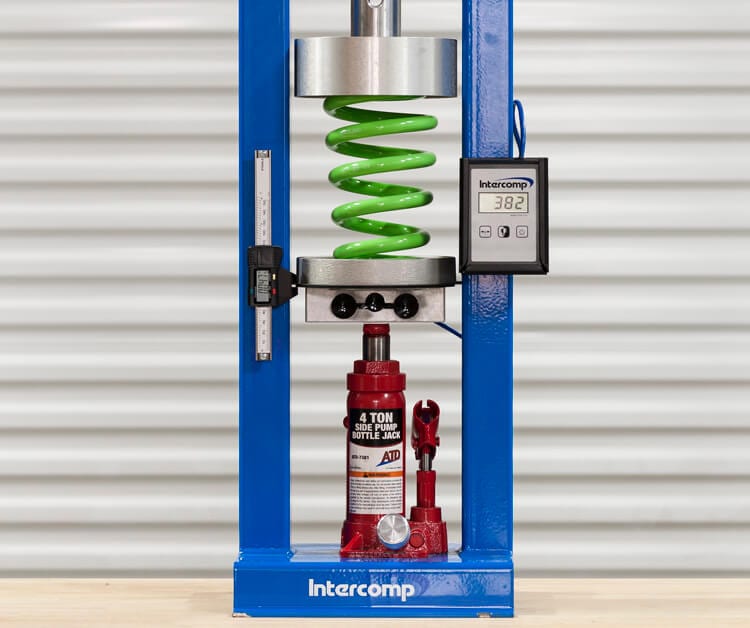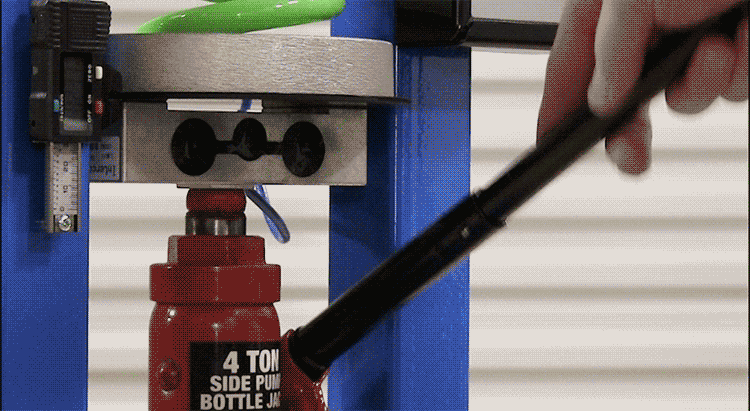Ever wonder why you see some companies listing their spring rates in kilograms (kg) and some in pounds (lb)? Well the short of it is that most companies headquartered in the United States will still use the Imperial system of measurement (pounds, lb), while those headquartered throughout Europe and Asia will use the Metric system of measurement (kilograms, kg).
When it comes to spring rates it is customary to measure how soft or stiff a spring is by how many units of force or weight, pounds or kilograms, it takes to compress the spring within a given distance increment, typically inches and millimeters. While companies using the Metric system will often list their spring rates with either k or kg, it really should be listed as kg/mm (kilogram per millimeter). So if a spring is listed at 5k it would mean it takes 5 kilograms of force to compress the spring 1 millimeter. If your spring rate is 450lb/in (pounds per inch) it will mean it takes 450 pounds of force to compress the spring 1 inch.

To test the spring rate, the spring is placed into a spring rate tester, like shown above, and is pre-compressed one inch (or millimeters if you’re using that measurement) and then compressed further to get the measurement for the next inch of compression. This will then tell you what the spring rate will be for that inch. You can then take another inch measurement if your machine will allow. Depending on the type of spring, this first measured inch will be sufficient but there are specific types that may require getting more than one inch of measurement.

Now unfortunately without having a spring rate testing machine of some sort, there really isn’t a way to home test a spring for its spring rate. Sometimes you can get lucky and the spring will have the spring rate printed on one of the coils. Often times this will be written like ‘400#’ or ‘#400’ letting you know the spring is 400lb/in. In most cases it will be best to call the manufacturer or supplier of the spring to confirm spring rate if it is not known.
Check back with us as we’ll be having more posts about springs, shocks, and other technical areas in future posts. Have suggestions on what you’d like to see explained in the future? Comment below and we can address those suggestions in future posts. Have any questions regarding springs or spring rates? Feel free to give us a call, 801-365-1440, or shoot us an email, info@raceland.com.






hi, I woud like to know please the spring rates for the bmw e36 ultimo coilovers kit and also if you have an option of stiffer springs for the kit . Thank you !
The front spring rates are 430lbs/in and the rear 400lb progressive. Unfortunately, at the moment we don’t offer higher rates. Feel free to give us a call if you have any other questions!
Would you be able to tell me the spring load for 2003 V .W. Passat gls 1.8 Lotte turbo. The front spring load. I appreciate any info and am glad for the site and the knowledge it gives
There isn’t a set pre-load for that model because the spring preload is what determines the ride height so that will vary depending on where you set the ride height.
I just changed out to some coilovers. When I push down on the front, it’s very stiff. But when I push down on the rear, it goes down further than the front. But the rear has a divorced setup. Is this common? Wondering if I need to go even stiffer in the rear.
The dynamics of the damping from the front to rear are going to be different because they are designed for that specific car so that is normal.
Thanks. Great info.
Question: How are “progressive, or variable” spring rates measured?
They are measured by each inch of compression, as it is going to be exponential verses linear.
Thank you. I take it that progressive springs will have a rating “range” ?
Correct. Generally, manufactures won’t provide a range, other than just stating that it is “progressive”.
What is the spring rate on the primos for a 07 mazda 3 for both the front and rears?
They are 385 lbs/in for the front and 290 lbs/in progressive, in the rear.
What are the spring rate for the ultimos for a 2012 Volkswagen Jetta? (Front/back)
It will depend on the sub-model as VW changed the suspension of the MK6 Jetta, depending on the year and sub-model.